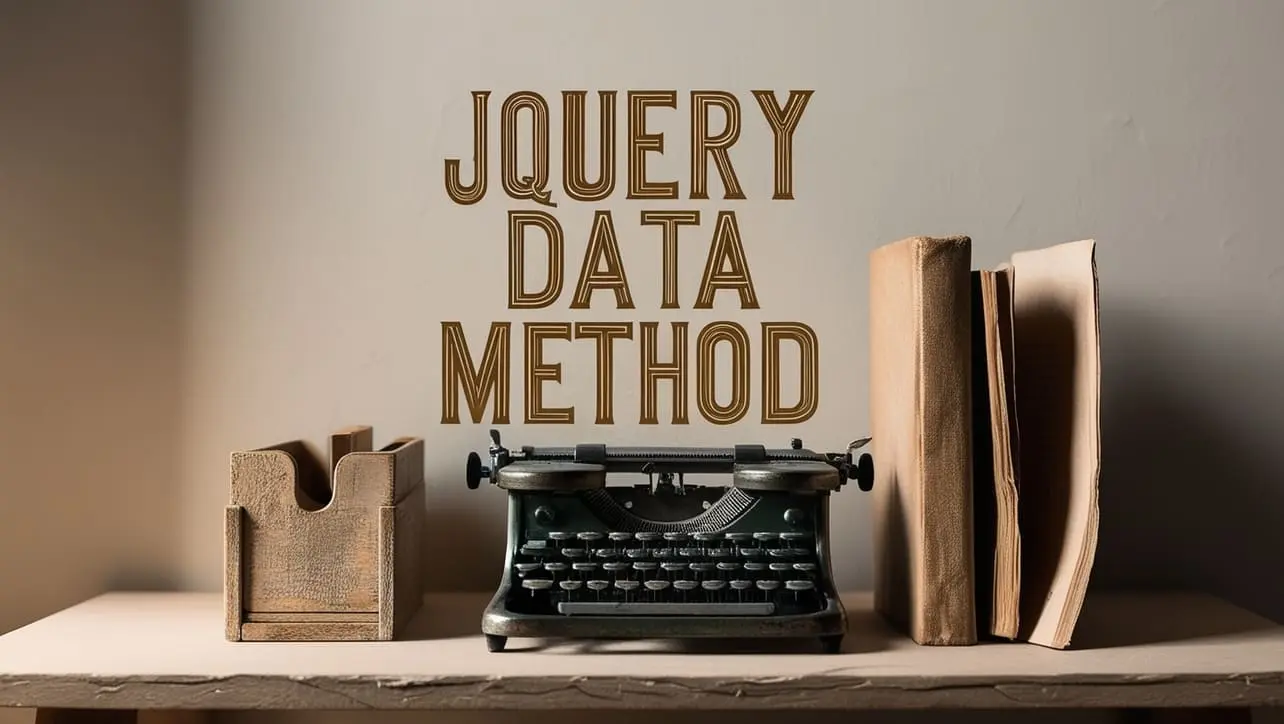
jQuery Topics
- jQuery Introduction
- jQuery Callbacks
- jQuery deferred
- jQuery selectors
- jQuery Ajax Events
- jQuery Ajax Methods
- jQuery Keyboard Events
- jQuery Keyboard Methods
- jQuery Form Events
- jQuery Form Methods
- jQuery Mouse Events
- jQuery Mouse Methods
- jQuery Event Properties
- jQuery Event Methods
- jQuery HTML
- jQuery CSS
- jQuery Fading
- jQuery Traversing
- jQuery Utilities
- jQuery Properties
jQuery .data() Method

Photo Credit to CodeToFun
🙋 Introduction
In the realm of web development, jQuery stands out as a powerhouse for simplifying JavaScript tasks. One of its most versatile tools is the .data() method, which provides a seamless way to associate data with DOM elements. Understanding and effectively utilizing this method can significantly enhance your ability to manage and manipulate data within your web applications.
This comprehensive guide aims to explore the intricacies of the jQuery .data() method through practical examples, empowering you to leverage its potential to the fullest.
🧠 Understanding .data() Method
The .data() method in jQuery serves as a bridge between JavaScript and HTML, allowing you to store and retrieve data associated with DOM elements. It provides a convenient mechanism for attaching arbitrary data to elements without cluttering the HTML markup.
💡 Syntax
The syntax for the .data() method is straightforward:
$(selector).data(key, value);
$(selector).data(key);📝 Example
Storing and Retrieving Data:
Let's start with a simple example of storing and retrieving data using the
.data()method:index.htmlCopied<div id="example"></div>example.jsCopied$("#example").data("name", "John Doe"); console.log($("#example").data("name")); // Output: John DoeIn this example, we associate the key "name" with the value "John Doe" and retrieve it using the
.data()method.Working with Objects:
You can also store and retrieve objects using the
.data()method. Here's an example:index.htmlCopied<div id="user"></div>example.jsCopiedvar user = { name: "Jane Smith", age: 30, email: "jane@example.com" }; $("#user").data("userInfo", user); console.log($("#user").data("userInfo").name); // Output: Jane SmithIn this case, we store a user object and retrieve its properties using the
.data()method.Event Handling with Data:
The
.data()method can be particularly useful for passing data between event handlers. Consider the following example:index.htmlCopied<button id="clickMe">Click Me</button>example.jsCopied$("#clickMe").click(function() { var data = $(this).data("customData"); console.log("Custom data:", data); }); $("#clickMe").data("customData", { message: "Hello, world!" });Here, we attach custom data to the button element and access it within the click event handler.
Removing Data:
You can remove data associated with an element using the .removeData() method:
example.jsCopied$("#example").removeData("name");This will remove the data with the key "name" from the element with the ID example.
🎉 Conclusion
The jQuery .data() method provides a powerful means of managing data within your web applications. Whether you need to store simple values, complex objects, or pass data between event handlers, this method offers a flexible and efficient solution.
By mastering its usage, you can streamline your code, enhance interactivity, and unlock new possibilities in web development.
👨💻 Join our Community:
Author

For over eight years, I worked as a full-stack web developer. Now, I have chosen my profession as a full-time blogger at codetofun.com.
Buy me a coffee to make codetofun.com free for everyone.
Buy me a Coffee












If you have any doubts regarding this article (jQuery .data() Method), please comment here. I will help you immediately.